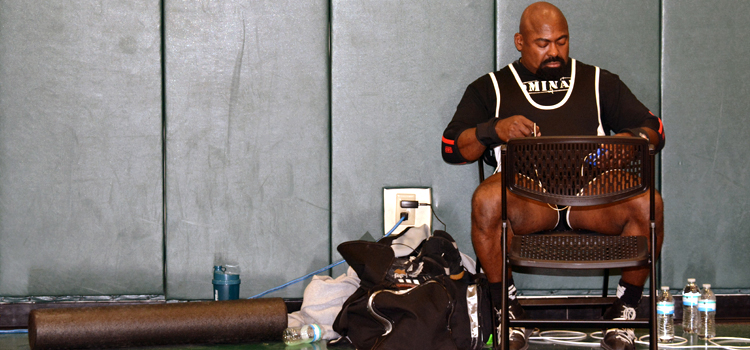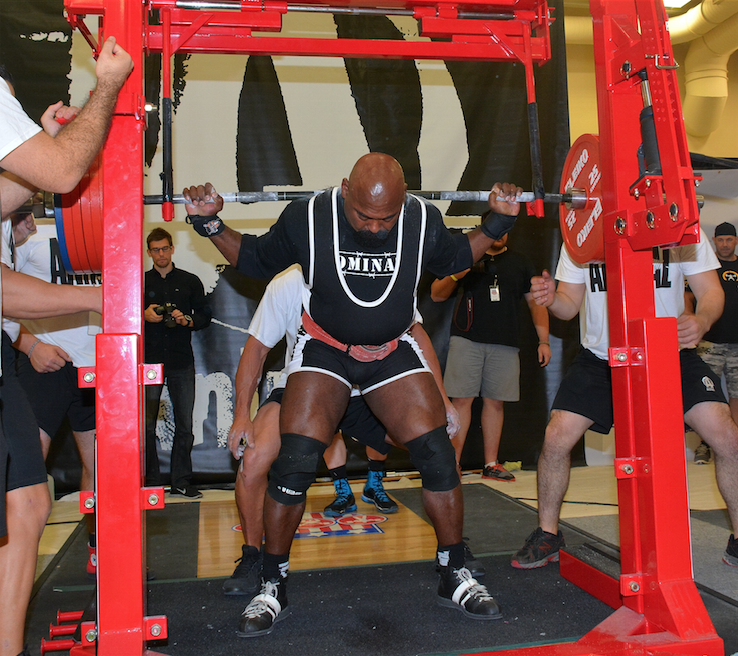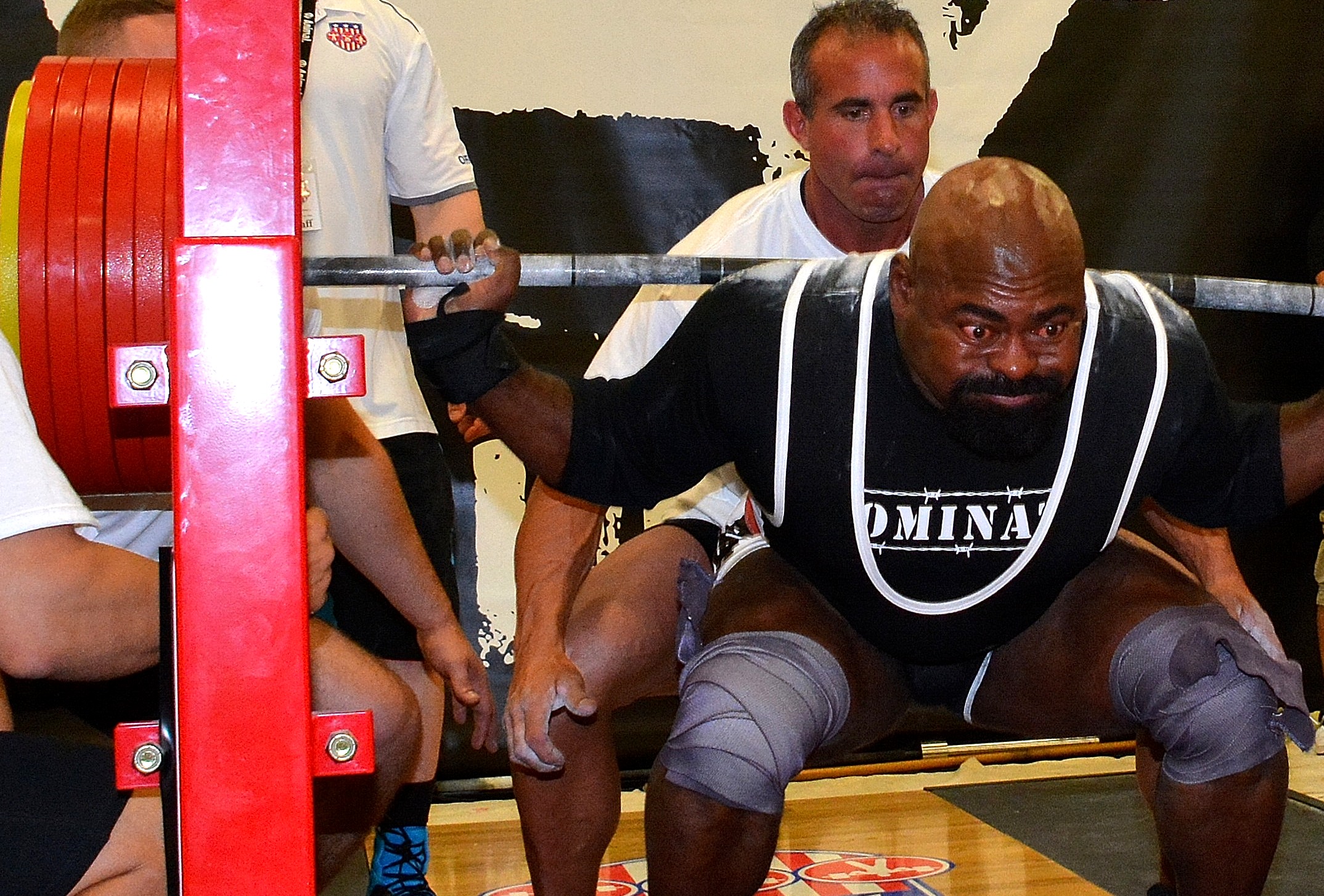
Imagine this scenario. You've had 12 weeks of meet prep and everything is going well; you’re hitting PR’s and the meet is right around the corner. You’re a 220-pound lifter, you’re 15 pounds away from your weight class, and you have three weeks to make it. So what do you do? You have a method that worked for you when you wrestled in high school so you do that and you make weight. Awesome, right?
You spend all day eating and drinking to put it all back on for the meet; your whole day is filled with food to get your weight back up. But then the meet day comes and you've only put on a few pounds, you feel like crap, and you consequently have the worst meet of your life. What went wrong? It wasn’t your training, because you were hitting PR’s. It wasn't your sleep, because you slept like a baby. And you did your deload so you could peak perfectly for the meet. What could it have been? I’ll let you think about it for a minute.
Still trying to figure it out? Don’t worry, I'll do it for you.
It was your weight cut. You did it all wrong and messed up 12 weeks of training. Wasted.
This is why you hear so many people say that you should never cut unless you’re trying to set a World Record. This statement just doesn’t make sense to me, though; anything you do in life, you do it to the best you can be at it, and being bigger in a smaller weight class is ideal to put your best foot forward. Just like getting good at the lifts by doing them, weight cuts take practice. It’s a skill that will be learned through trial and error, so practice makes perfect. Don’t be like Allen Iverson and just show up and hope things go well.
So, instead of me telling you not to cut weight, I’ll just show you the proper way to do it so you can perform at your best on game day. It’s not as hard as it seems and with just a few minor adjustments you’ll be ready to peak, instead of being ready to make excuses and eating your way to SHW because things didn’t workout the way you intended it to.
MORE: Cutting Weight for Strongman: Is It Helping or Hurting You?
With a meet approaching, you have a certain timeline to follow. This is typically after a meet you decide on your next one, hopefully 12-16 weeks away so you give yourself time to get better. Right after the meet, what typically happens is that powerlifters go hog wild and eat everything in sight like they just dieted for a bodybuilding show, when in reality they cut weight for three days. This takes a little bit of discipline on your part and I’m assuming if you’re reading this, you want to be the best and will do what it takes to get there.
Right after the meet is a good time to up the calories in a clean and healthy manner. I would suggest you get your protein in and carbs around the time of training and your fats away from it. The reason for this is that fats slow down absorption rate of nutrients and keeps you full and satiated which is great away from a workout but could be extremely detrimental pre, during and post workout. That’s why you want carbs and protein around your workout: the carbs will help spike insulin which slows down protein degradation the breaking down of muscles and it also helps shuttle in the protein at a rapid pace which means faster protein synthesis which is the building of muscles.These extra calories will allow your body to recover from the meet and the grueling training cycle you just went through.
Do this for two to three weeks and then it’s time to get serious with dieting. An example of this would be a 220-pound lifter who went to 2000 calories the week of the meet to make weight. The table below will show you what the next three weeks will look like.
After a meet, you’re doing more of a high volume hypertrophy to let your body heal a bit and to build up those weak areas. Well, this is also the perfect time to do your weight cut. The extra volume will allow you to keep some muscle mass on as you start to decrease the calories. The key here is to decrease bodyweight in a slow and methodical manner so your body can adopt to your new leverages, or lack there of. You’ll notice as you get lighter, your strength may decrease. I find that this has more to do with not having the same leverages you had when you were a fatty not so much a loss in strength.
Doing it slow, right around one to one and a half pounds per week is ideal to keep size and strength up. This will also give you a gauge on what week to pull the plug and start upping the calories again. But let's not get ahead of ourselves just yet. The idea here is to get as close to comp weight as possible, so if you’re a 220-pound lifter you would look to get down to 226-228 pounds. Hopefully if you didn’t get too fat after the meet, this should be relatively easy. For example, let's say at last meet you did, you weighed in at 220 pounds and after recomp and eating more calories for those two to three weeks you got your weight back up to 238 pounds. So if you start 16 weeks out and follow that slow and steady protocol, you’ll be right around 228 pounds by seven to eight weeks out. This is where the fun happens.
This is where the hard work starts and the true champion steps up to set become better. We start to up some calories but nothing crazy like 5000 calories. Start with a slow a steady increase in carbs per week. First three weeks you’ll add 10-15g of carbs to post workout meal. Here is an example for the same 220-pound lifter.
You may actually still lose weight with the added carbs so don’t fret, because we both know you’re consuming more calories. From dieting, your body is ready to absorb and use those nutrients for muscle building and your metabolism should be through the roof. After the first three weeks pass and we have upped the carbs the next weeks leading up to weight cut week, you’ll add 10% protein per day in week four, then 10% carbs week five. If weight is still within reach (6-8% of comp weight), you’ll add 10% of fats. This will take you up to meet week. You can see how this is already beneficial compared to how you normally cut. You are increasing calories during the heaviest and most taxing part of your meet prep which will help with recovery, instead of waiting until four weeks to start crash dieting to make weight.
Now onto the actual week of competition. The worst thing you can do here is try to starve yourself to make weight or exercise to make weight. These two scenarios will drain and fatigue you even more when you’re supposed to be resting and recovery so you can peak for the meet. This is the exact protocol I use as a 242-pound lifter, so obviously you’ll adjust it to your bodyweight. This was designed by Mike Mastell and I’ve used it three times to perfection. He has used it several times with all great results.
Water Load
Monday — Drink 1.5 gallons of distilled water
Tuesday — Drink 2 gallons of distilled water
Wednesday — Drink 2.5 gallons of distilled water
Thursday — Drink 2.5 gallons of distilled water
Friday — Drink 1 gallons of distilled water before 12 PM
Diet
Monday — Maintain the same
Tuesday — Decrease portion size slightly but maintain same plan
Wednesday — Cut out red meat and carbohydrates
Thursday — Cut out red meat and carbohydrates and cut meals in half
Friday — Wake up and consume six egg whites. Several hours later, around 10 on a normal schedule, have a protein shake using 1.5 scoops protein mixed with distilled water. Two hours later, around 12, eat six ounces chicken breast. Cut off food after that. If you really need something to eat you can have a handful of unsalted nuts.
Weight Cut
Begin at 12: Sauna 15 minutes on, 15 minutes off for two hours. Weigh yourself before and after every session. If you ever come out the same you went in then go home and rest for one to two hours. After every two hour session, go home and rest for one to two hours.
The whole idea is that you stay relaxed. You want to keep s to a minimum and any undue stress will cause you to start to pump aldosterone. Aldosterone plays a central role in the regulation of blood pressure mainly by acting on the distal tubules and collecting ducts of the nephron, increasing reabsorption of ions and water in the kidney, to cause the conservation of sodium, secretion of potassium, increased water retention, and increased blood pressure.
Recomp
Your body holds 85% of your glycogen stores in your muscle bellies and 15% in the liver. As you become more muscular, obviously you can store more in your muscle and hopefully your liver hasn’t grown any larger. The average human stores around 200 grams of glycogen in their system, but you’re not average and questionably human, so you can probably store as much as 300 grams. The idea here is to store the glycogen in small phases so that we don’t activate liponeogenesis (fat generation) too much. This means start off with small meals and gradually increase the size of each meal so your stomach doesn’t get aggravated and you end up in a food coma and stomach irritation.
Immediately consume two liters of pedialyte in the first hour and eat 100 grams of glucose tabs.
After the first hour, drink two liters of water per hour. Your first meal will be between 10 and 10:30. You want to give your stomach time to adjust so you don’t get sick. The glucose is really fast absorbing and will help get blood glucose levels up quickly.
Meal 1 — 10 AM. First meal I like to keep it light and easy to digest so I go with cream of rice and some protein mixed. Drink some V8 tomato juice with every meal and add some soy sauce to all meals.
Eat a large amount but do not force feed here. This is were a lot of people miss the boat; they go to big and get sick and the rest of the day is spent trying to keep food down because they ate to much to soon. Remember you have all day to eat so don’t cram it all in one meal.
Meal 2 — 1PM. White meat meal. Do not consume any veggies or greens. Eat any carbohydrate source you’d like here such as sweet potatoes, white rice, rice cakes, cream of rice, white potatoes. Choose carbs that are easy to digest with minimal sugar intake.
Meal 3 — 4 PM. Eat a huge steak with sweet potatoes or white potatoes. You can eat the potatoes any way you would like.
Meal 4 — 7 PM. Another meal with a huge serving of red meat and lots of potatoes.
You can snack in between these meals. I don’t recommend eating a ton of junk but you can have a little.
Once you finish your last meal and get to the hotel room, drink a quart minimum of full pulp orange juice with 2-3 large dark chocolate bars.
Morning of Meet
Go for breakfast and eat some eggs with bacon or sausage. Have a medium portion of carbs such as pancakes or potatoes and some toast. Grits would work here as well. Drink plenty of water. Remember that you want something that will sit well in your body and not disrupt your digestion.
Contest Food
Half hour before your flight starts for each lift, drink 100 grams of cyclic dextrins or karbolyn. After every attempt, eat six glucose tabs and a pinch of table salt. Don’t screw around with those sports drinks, for many reasons. Too much potassium could potentially make you cramp and it can mess with your electrolyte balance. Also, the fructose in high fructose corn syrup converts to glycerol very easily and enters liponeogenesis. That is not what you want when your body is using every last bit of energy for that world record squat. You need the sodium and chloride ions present because these elements help your muscles contract and fire. An increase in this will allow you stay full and powerful throughout the whole meet, so you don’t die down after each lift.
You should put BCAAs in your water jug to sip on all day. Then after each flight, eat two to three PB&J sandwiches. Use potato bread or white bread, not whole grain bread. For something to munch on between if you need a light snack, eat protein bars or trail mix. I use next level protein bars or focus food bars; they're easy to digest and taste great.
So there you go, a little bit of science, backed with a lot of anecdotal and personal experience. Science without application is just BS. Try this out and get ready to smash weight at a lighter weight class and set PR’s!
Images courtesy of Kenneth Richardson
Tony Montgomery is an elite level powerlifter in the 220-pound and 242-pound weight class. He spent four years in the Marines and studied Exercise Science at Florida Atlantic University. He’s the owner of TM Nutrition where he offers nutrition and training programs, check out his stuff at tmnutrition.net or email him at tony@tmnutrition.net














1 Comment